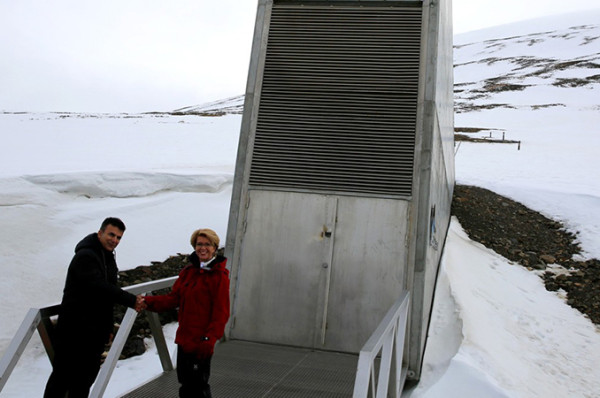Margot Forde Genebank
AgResearch Core Funding supports the Margot Forde Genebank; New Zealand’s national seed bank and home to thousands of different species of forage grasses, herbs and legumes.
Plant germplasm consists of seeds of genetically diverse plant populations that are conserved for use in plant breeding and to ensure the survival of every individual plant population of agriculturally or environmentally important species.
The role of the Genebank is to obtain, conserve, replenish and distribute germplasm for research and development that may lead to the introducing new cultivars in future. The genebank holds seeds from about 100 countries representing 2,200 species from 500 genera and over 70 plant families. Included are extensive wild populations of forage species and their wild relatives, samples of foreign and domestic cultivars, breeding lines and genetic stocks.
“Because New Zealand's export economy is based predominantly on pasture, and almost all pasture plants have been introduced to New Zealand from other countries, it is a critical resource for farmers and indisputable wealth for New Zealand as a whole,” says the Genebank’s Director Kioumars Ghamkhar.
“It holds all the genetic diversity that is needed to keep our pastures productive, competitive and future-ready. Continued access to exotic germplasm is crucial for the future of New Zealand’s pasture systems,” he says.
The Genebank includes extensive wild collections of known and not so well known species, samples of foreign and domestic cultivars, breeders’ lines and genetic stocks and is internationally unique for its forage grass and legume collection.
“We need to promote this uniqueness, of course, and I have made that my mission since my arrival here at AgResearch,” says Kioumars.
Countries where the Margot Forde team have collected seed from include Armenia, China, Cyprus, Georgia, Greece, Kazakhstan, Portugal, Russia, Spain, Tajikistan, Turkey, and the United States. The samples are couriered back to Auckland, and then go through quarantine procedures before being delivered to the Genebank.
The collection is used by researchers from around the world, but its primary purpose is for New Zealand farmers through its biggest users New Zealand scientists and local commercial companies. A high proportion of the pasture grasses, legumes and herbs sold in New Zealand today have originated from germplasm held in the Genebank.
As well as being the national genebank of grassland plants, the Genebank is also the seedbank for New Zealand native species and a safe duplicate site for grassland species from other international genebanks.
Recently Kioumars delivered selected New Zealand seeds to the Svalbard Global Seed Vault, a secure seed bank on the Norwegian island of Spitsbergen near Longyearbyen in the remote Arctic Svalbard archipelago. This was the Genebank’s first deposit at the facility and is the only back-up of our collection of wild and cultivated forage species collectively to ensure our forage genetic heritage is held securely in case of a fire or natural disaster such as earthquake or even war.

Kioumars says that what is most satisfying about their work is seeing the collection being used, resulting in improved pasture cultivars being offered to the New Zealand farmer.
“It is not a dusty archive, it is a valuable working asset for New Zealand and the rest of the world now and well into the future.”